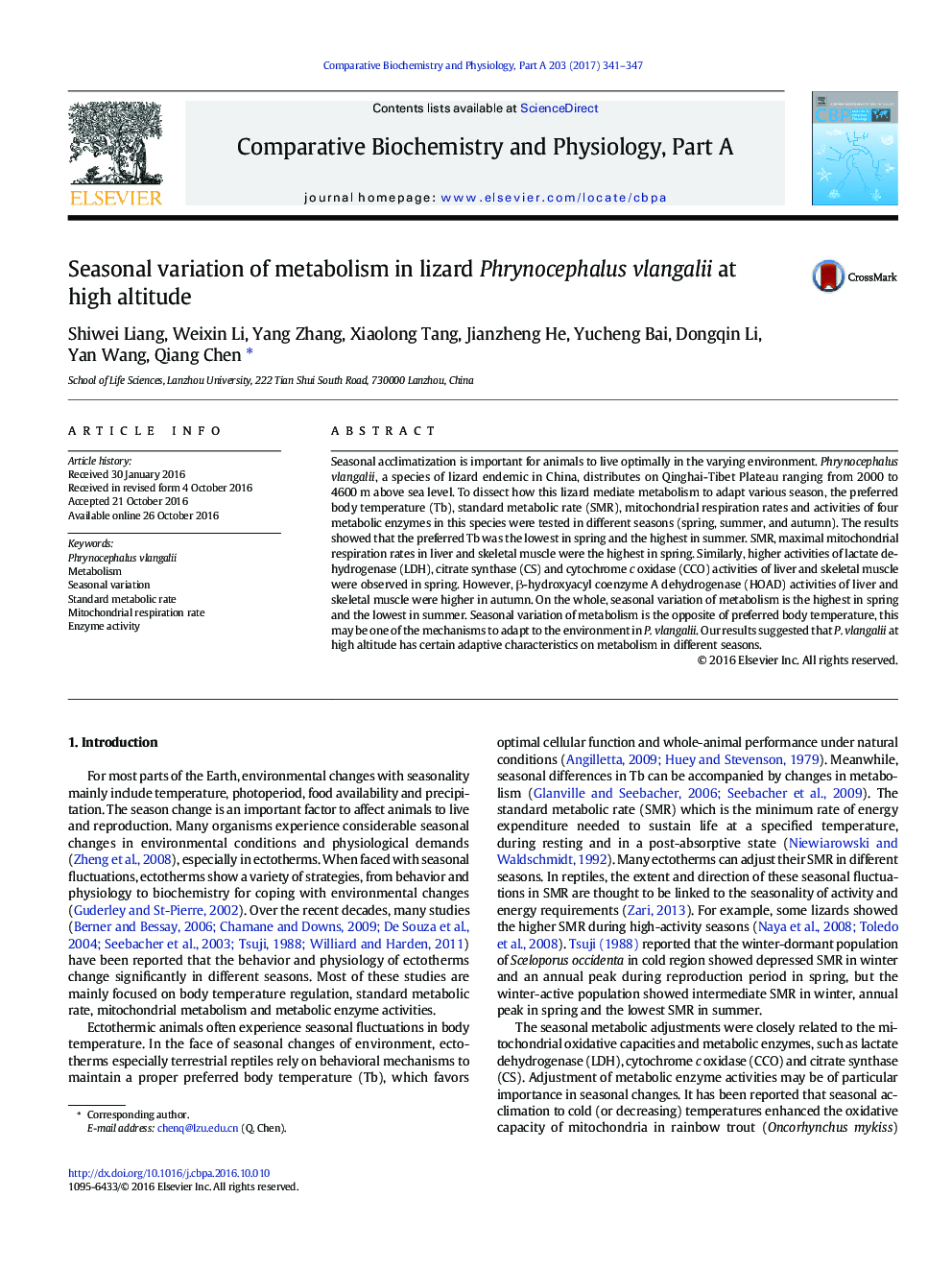| Article ID | Journal | Published Year | Pages | File Type |
|---|---|---|---|---|
| 8318465 | Comparative Biochemistry and Physiology Part A: Molecular & Integrative Physiology | 2017 | 7 Pages |
Abstract
Seasonal acclimatization is important for animals to live optimally in the varying environment. Phrynocephalus vlangalii, a species of lizard endemic in China, distributes on Qinghai-Tibet Plateau ranging from 2000 to 4600 m above sea level. To dissect how this lizard mediate metabolism to adapt various season, the preferred body temperature (Tb), standard metabolic rate (SMR), mitochondrial respiration rates and activities of four metabolic enzymes in this species were tested in different seasons (spring, summer, and autumn). The results showed that the preferred Tb was the lowest in spring and the highest in summer. SMR, maximal mitochondrial respiration rates in liver and skeletal muscle were the highest in spring. Similarly, higher activities of lactate dehydrogenase (LDH), citrate synthase (CS) and cytochrome c oxidase (CCO) activities of liver and skeletal muscle were observed in spring. However, β-hydroxyacyl coenzyme A dehydrogenase (HOAD) activities of liver and skeletal muscle were higher in autumn. On the whole, seasonal variation of metabolism is the highest in spring and the lowest in summer. Seasonal variation of metabolism is the opposite of preferred body temperature, this may be one of the mechanisms to adapt to the environment in P. vlangalii. Our results suggested that P. vlangalii at high altitude has certain adaptive characteristics on metabolism in different seasons.
Related Topics
Life Sciences
Biochemistry, Genetics and Molecular Biology
Biochemistry
Authors
Shiwei Liang, Weixin Li, Yang Zhang, Xiaolong Tang, Jianzheng He, Yucheng Bai, Dongqin Li, Yan Wang, Qiang Chen,
